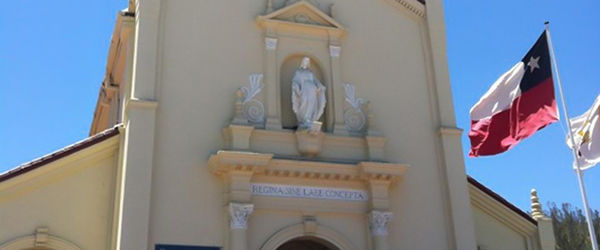A number of current St. Francis Xavier parishioners were themselves wartime internees. Recently, some of them shared reflections on their experiences of internship in the camps and the religious who served there.At 82, Angie Nakamura continues to give back to her lifelong parish, driving other parishioners to Mass, prayer meetings and various St. Francis Xavier activities. Married 47 years to Susumu “Joe” Nakamura until his death in 2003, she has taught her children that they, too, must give back. Daughter Lynn is in charge of St. Francis Xavier’s youth group and son Rick is in charge of the parish Auxiliary, a group of middle-aged adults who pray and meet socially. Always ready to help others, Angie says she learned Christian charity from her parents whose small restaurant, near old St. Vibiana Cathedral, was the centerpoint for charity. “Anyone who came looking for food or help always received something,” Angie says proudly. Baptized in St. Francis Xavier Chapel as an infant, Angie attended Maryknoll School until she was 11 and her family was sent to Manzanar. “They sold everything really cheap,” she recalls. The rest were stored by their close Italian friends, the Massa family, until they returned. “They were a strong Catholic family, too, a good family, and they suffered a lot during all this as well,” Angie says. “So my father said, ‘Enough,’ and he let them keep a lot. There were a lot of good people who came forward.”At Manzanar, Angie helped two Japanese Maryknoll Sisters with Saturday catechism classes for pre-school age children. The Maryknoll priests came to celebrate Mass every day, even in freezing weather. “My father would light the pot-bellied stove so the barrack would be warm for Mass,” says Angie. “The Maryknoll priest, Father Leo Steinbach, commuted every day from Lone Pine. He was a holy priest. He taught us so much. He would say, ‘Walk with a pebble in your shoe and offer it up.’” Angie’s sister Mary Suzuki wrote a letter to General DeWitt protesting “incarceration without trial” of the Japanese internment. Still, during the time in camp, Angie says, “I never questioned my faith. It was, ‘Gambate! We will make it.’” If times were tough in camp, her parents would say, “Shikataganai” (“It can’t be helped”).“Christ suffered for us,” says Angie. “He offered things up for us, and there are things that we have to offer back up to him.” George Takahashi has been a parishioner at St. Francis Xavier Chapel since he was 8. He calls himself “retired” and a “volunteer” but, at 70, works as hard or harder than most paid parish employees: he manages the parish plant, schedules parish activities, is in charge of the Boy Scout troop, answers phones in the office, and never misses daily Mass.At the beginning of WWII, George and his family were living in Northern California. He and his parents were sent to Heart Mountain Internment Camp in Wyoming. (His mother, though born in Hawaii, was raised in Japan, which makes him Nisei, or second generation Japanese.) Today, he prefers to stay in the background and not talk much about himself. But, he adds, “I have a great deal of reverence for the parish elderly and those who have been faithful to the Church through good times and hard times.” Just a few months ago, after 67 years of marriage, Agnes Doi lost her husband Vincent. Yet at 93, she remains a spirited and spiritual parishioner who attends the Marian Prayer Group and craft classes, and is interested in all that is happening in her parish. Born in San Francisco, Agnes was sent during WWII to the Heart Mountain Internment Camp in Wyoming. After the war she was relocated to Milwaukee and then Chicago where she became a secretary at the University of Chicago and met electrician Vincent Doi. They married in 1946 and had five children, one born in Chicago and the other four in Los Angeles. One daughter, Maryknoll Sister Joanne Doi, worked in Peru as a missionary and taught theology in Berkeley; she just received her PhD at the Franciscan School of Theology. Her parish is important to her, she says, because “it was built by our parents, the Iseis, the Japanese born in Japan who emigrated to the U.S. They raised the money and built the church themselves, and later the school. As their children we contributed to the school, and so it’s the community, the Maryknolls and the hard work of our families whose memories that we honor.”

